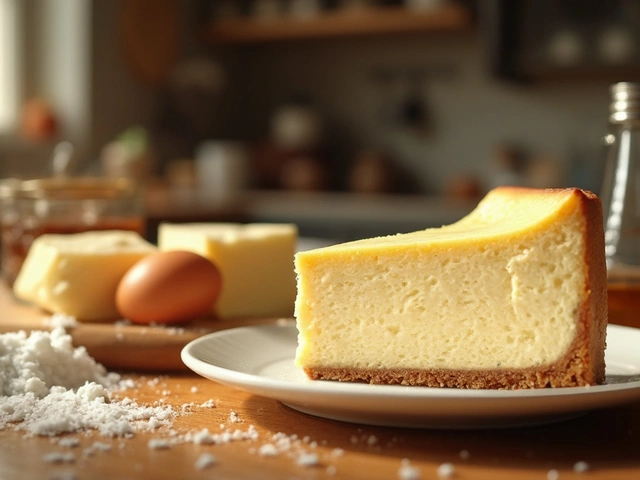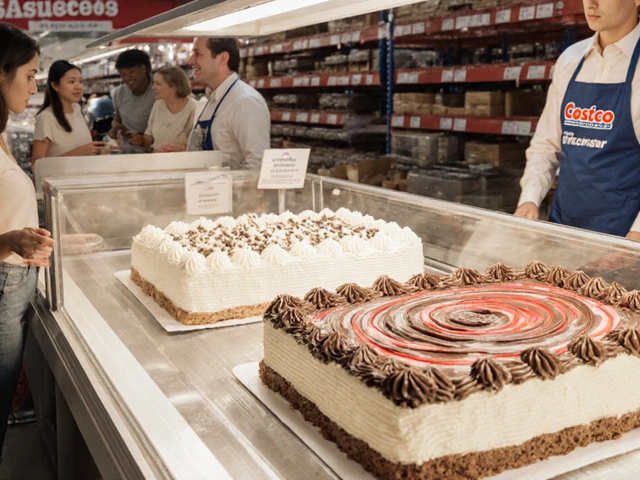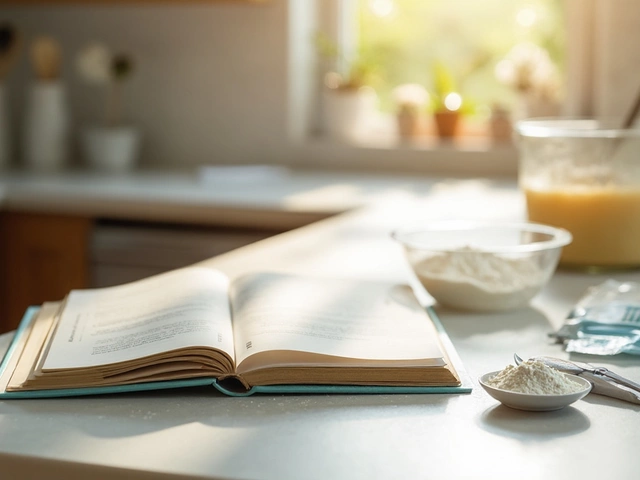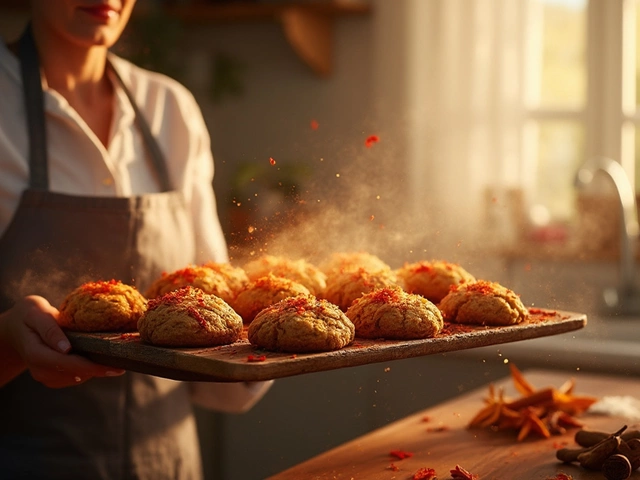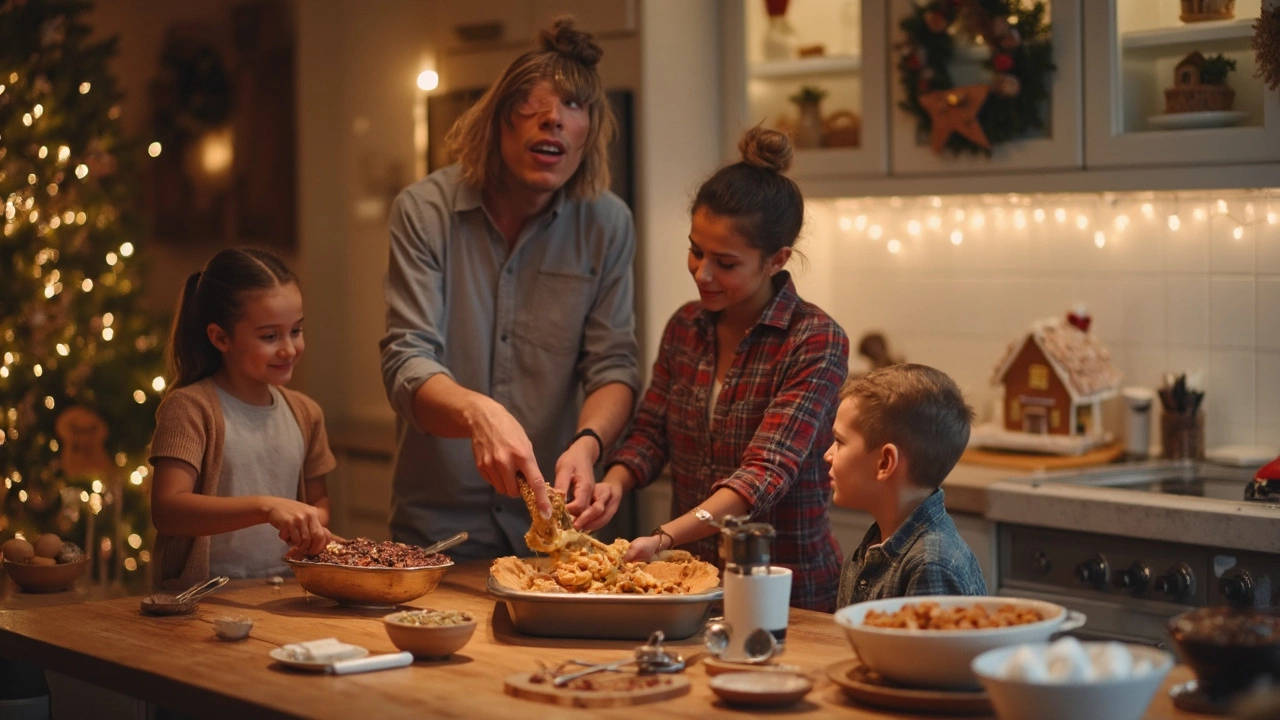
Walk into any American candy shop and ask for fudge, and you’ll get a thick, rich block of chocolatey goodness—never the runny kind or a chewy caramel substitute. In the U.S., "fudge" almost always means a dense, creamy confection, usually with chocolate as the star, though there are wild flavors out there. It’s nothing like what Brits might call fudge. Here, it’s softer and sweeter, sliced into squares, and served at everything from school bake sales to fancy holiday gatherings.
Ask anyone about their first taste, and chances are, it was a homemade batch from a neighbor, grandma, or local fair. The simplicity adds to the magic: just sugar, milk, butter, and chocolate—plus maybe a handful of walnuts or marshmallows if you're feeling adventurous. Getting it right isn’t about fancy tools; most American families use a classic stovetop and basic saucepan.
- What Exactly Is Fudge in America?
- From Grandma’s Kitchen: Classic Fudge Traditions
- Surprising Variations and Local Favorites
- Tips for Making Perfect Fudge at Home
What Exactly Is Fudge in America?
When Americans say “fudge,” they’re talking about something totally different from caramel or toffee. Fudge in the U.S. is a thick, smooth, and sliceable candy, most often made with sugar, butter, and milk, plus plenty of chocolate. It shouldn’t be chewy or rubbery; the texture’s more like a creamy, melt-in-your-mouth block.
It all goes back to the late 1800s, when fudge first popped up in college towns. The earliest batches came out of a Maryland women’s college kitchen in 1886. Back then, someone “fudged” a batch of caramels and accidentally created a whole new treat. Since then, it’s become a staple at holidays, gift shops, and family gatherings across the country.
The fudge you’ll find in the States usually keeps it simple. Here’s what you’ll see in most classic recipes:
- Granulated sugar
- Butter (usually unsalted)
- Milk or heavy cream
- Cocoa powder or chocolate chips
- Flavor extras like vanilla or chopped nuts (optional)
American fudge is all about getting that just-right soft set—not too gooey, not too firm. Usually it cools in a pan, then gets cut into squares or rectangles. Compared to British fudge, which leans grainy and chewy, the American stuff is all about smoothness and sweetness. It’s also pretty sweet: one square can have up to 100 calories (no shame, it’s a treat!).
| Type | Texture | Main Ingredients |
|---|---|---|
| American Fudge | Smooth, creamy, dense | Sugar, butter, milk, chocolate |
| British Fudge | Grainy, chewy | Sugar, butter, milk (little or no chocolate) |
People in the U.S. love to keep it classic, but don’t be surprised if you run into peanut butter, maple, or rocky road fudge at tourist spots and farmer’s markets. The heart of it, though, is that unmistakable creamy chocolate square—just sweet enough and never complicated.
From Grandma’s Kitchen: Classic Fudge Traditions
When Americans think of fudge, there’s almost always a kitchen story behind it. This treat has roots in home cooking and holiday gatherings, especially around Thanksgiving and Christmas. In fact, the first reported batch of fudge in America was made by a college student in Vassar College back in 1886. It set off a trend that swept through college campuses and, soon after, home kitchens across the country.
Family fudge recipes are handed down like secret treasures—sometimes scribbled on faded index cards. Even today, making fudge at home is a kind of ritual, often with kids helping to stir the bubbling mix and sneak tastes off the spoon. Classic American fudge is usually cooked on the stovetop and then beaten until the texture is just right—smooth, not grainy. It’s often poured into a buttered pan, cooled, and cut into squares.
- Fudge is a go-to treat at bake sales and potlucks. People love bringing their family’s version to share—and sometimes to show off.
- During the winter holidays, homemade fudge is a staple in care packages and gift tins.
- Some traditional mix-ins include walnuts, pecans, or a swirl of peanut butter. But the base is always chocolate, sugar, and dairy.
Here’s a fun bit—a 2022 survey found that 78% of American families who make fudge do so at least once a year, with most choosing the winter season. Vanilla and chocolate remain the top flavors in those households.
| Year | Fudge Mentioned in U.S. Cookbooks |
|---|---|
| 1896 | Appeared in the Fannie Farmer Cookbook |
| 1910s | Became a holiday favorite in most regions |
| 1950s | Marshmallow creme recipes became popular |
| 2000s | Recipes spread online, boosting homemade fudge trends |
If you get the chance to try someone’s homemade fudge, do it. You might just taste a century-old family tradition—sweeter than anything from a store.
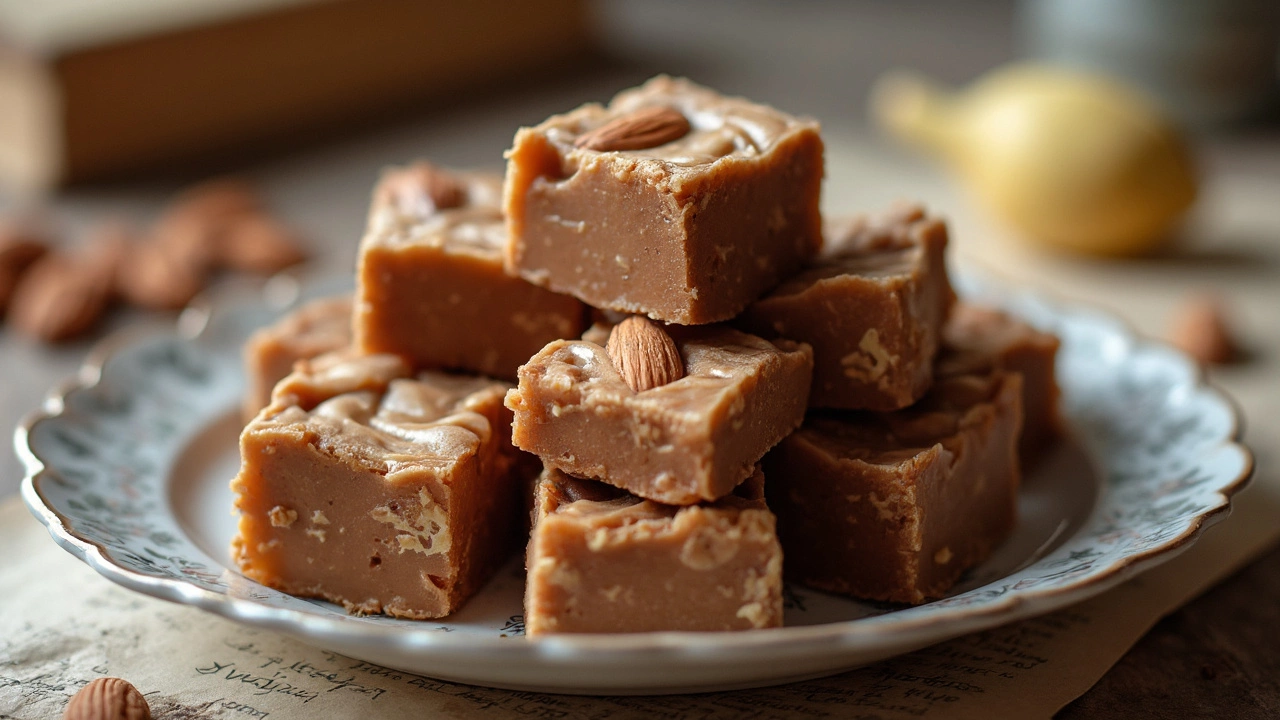
Surprising Variations and Local Favorites
Think all fudge is just plain chocolate? Not even close. Every corner of America loves to put its own spin on fudge. Mackinac Island in Michigan is basically famous for it—people even call tourists “fudgies” because so many show up craving slices. The island alone is home to over a dozen shops, each with unique takes like maple nut, blueberry, or even peanut butter fudge. According to the Mackinac Island Tourism Bureau, fudge makers there go through over 10,000 pounds of sugar every week during summer. That’s some serious sweet tooth action.
Head down South and you’ll find fudge fans mixing in pecans or layering caramel in between for an extra sticky treat. In Santa Fe, chocolate fudge sometimes gets a dash of local chili for a real spicy kick, showing Americans aren’t shy about experimenting. Even classic bakeries in small towns usually offer at least a couple of wild flavors—birthday cake, cookies-and-cream, or salted caramel.
Here’s a look at some top flavors across the country:
- Chocolate Walnut
- Peanut Butter Swirl
- Rocky Road (marshmallows and nuts inside)
- Mint Chocolate
- Maple Pecan
- Pumpkin Spice (a fall favorite!)
And just to give you an idea of how big fudge is, take a peek at these numbers from a recent candy expo:
| Top Fudge Varieties (2024, US) | Percent of Total Fudge Sales |
|---|---|
| Chocolate (classic and walnut) | 48% |
| Peanut Butter Variations | 16% |
| Maple & Specialty Flavors | 12% |
| Fruit-Infused (berry, orange, etc.) | 14% |
| Other/Seasonal (pumpkin, mint, etc.) | 10% |
If you’re near a local candy shop or traveling through a touristy spot, always ask what their “weirdest” fudge flavor is. You’ll be surprised at what you find—sometimes, it’s a new favorite waiting for you.
Tips for Making Perfect Fudge at Home
Getting your homemade fudge just right isn't about luck—it's about paying attention to a few key steps. Mess up a single detail and you could end up with gritty, hard fudge instead of something smooth and creamy. Here’s what you need to know to nail it every time.
- Temperature is everything. Use a candy thermometer. Fudge needs to hit 234–238°F (also called the "soft ball stage"). If you don’t have a thermometer, drop a spoonful of the mixture into cold water—if it forms a soft ball, you’re ready for the next step.
- Don’t stir too soon. After you take the pan off the heat, let it cool to about 110°F before beating it. Stirring hot fudge too soon can lead to sugar crystals, turning your fudge gritty.
- Line your pan with parchment paper or foil. This makes it easy to pull out your fudge and cut it into neat squares without it sticking to the pan.
- Choose quality ingredients. You don’t need fancy chocolate, but don’t skimp on the basics—use real butter and skip the margarine. Good cocoa or chocolate chips go a long way.
Watch out for humidity—fudge is moody when the air is damp. Many experienced candy makers say fudge sets better on dry days. Also, work fast when pouring it into the pan; fudge thickens quickly and won’t spread well if you wait too long.
It also pays to keep your portions in check. A typical batch yields sixteen 1.5-inch squares, each about 120 calories. You can see how the break-down looks in this table:
| Serving Size | Calories | Sugar (g) | Fat (g) |
|---|---|---|---|
| 1 Square (1.5" x 1.5") | 120 | 15 | 5 |
| 2 Squares | 240 | 30 | 10 |
| Whole Batch (16 Squares) | 1920 | 240 | 80 |
If you want to add nuts or swirl in peanut butter, do this right after beating and just before pouring it into the pan. Fudge sets fast, so prep your add-ins while it’s cooking. And don’t stress if it doesn’t come out perfect your first try—practice really does make better fudge. With these tips and a little patience, you’ll have that fudge everybody at the potluck talks about.


